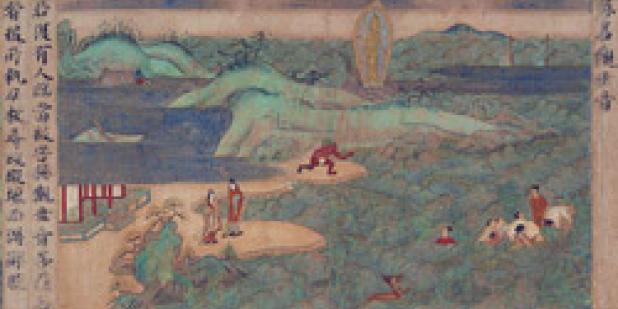Happy Lunar New Year from the USC US-China Institute!
Cultural Crossings: China and Beyond in the Medieval Period
This interdisciplinary conference and digital projects workshop investigates exchanges between China and neighboring cultures during the medieval period.
Where

Coinciding with the exhibition, “Treasures Rediscovered: Chinese Stone Sculptures from the Sackler Collections at Columbia University,” to be held at the University of Virginia Art Museum (January 15–March 14, 2010), “Cultural Crossings: China and Beyond in the Medieval Period” combines an international conference with a workshop on digital projects to investigate exchanges between China and neighboring cultures during the medieval period (third–tenth centuries) from cross-cultural and interdisciplinary perspectives.
Since its establishment in the first century of the common era, the Silk Road was a channel for the transmission of ideas, technologies, and artistic forms, with far-reaching impact that stretched from the Pacific to the Atlantic. In Asia, the transmission of religious faiths along the Silk Road—most notably Buddhism—had a profound impact on the ideas, material culture, and languages of the region. During this period, Buddhism spread eastward from India via both land and maritime routes. By the end of the seventh century, the center of the Buddhist world had shifted to China, where Indian and Central Asian Buddhist monks gathered at the capitals of the Tang (618–907) dynasty. Diplomatic missions and pilgrim-monks from the kingdoms of Korea and Japan brought this religion and other aspects of Chinese civilization back to their own countries. The fruits of these exchanges were manifested in an increasingly uniform and international Buddhist idiom, along with other cultural elements that still remain to be explored in depth.
The “Cultural Crossings” conference intends to open new avenues for research into these complex and far-reaching exchanges by breaking down traditional national and disciplinary boundaries. By bringing together specialists of the period who are engaged in research in such diverse areas as Silk Road studies, history, literature, gender, art, and religion of the region—and putting them into productive dialogue with one another—we hope to identify areas of common interest that can foster new approaches. Understanding of transnational exchanges in such historical contexts, moreover, deepens our appreciation of the modern world from a global perspective.
Taking advantage of the gathering of scholars from a wide range of disciplines at the conference, the Institute for Advanced Technology in Humanities (IATH) at the University of Virginia will also host a half-day workshop (March 13) to focus on collaborative scholarship that has the potential to enhance existing related digital projects in Asian art and humanities.
Visit the website for more information.
Featured Articles
We note the passing of many prominent individuals who played some role in U.S.-China affairs, whether in politics, economics or in helping people in one place understand the other.
Events
Ying Zhu looks at new developments for Chinese and global streaming services.
David Zweig examines China's talent recruitment efforts, particularly towards those scientists and engineers who left China for further study. U.S. universities, labs and companies have long brought in talent from China. Are such people still welcome?






